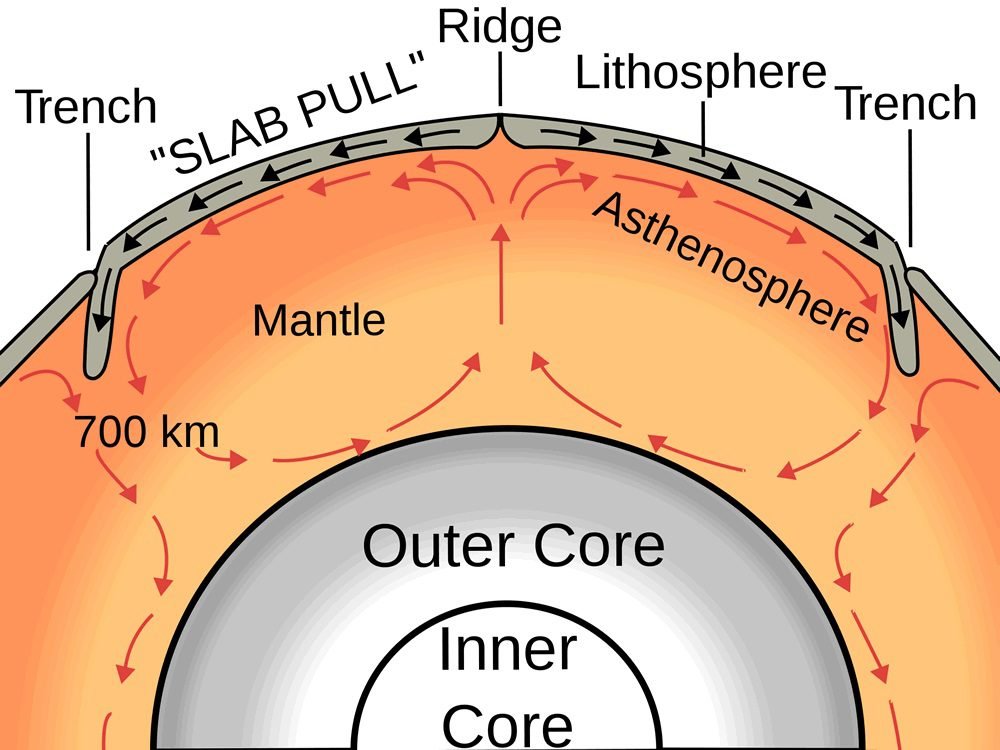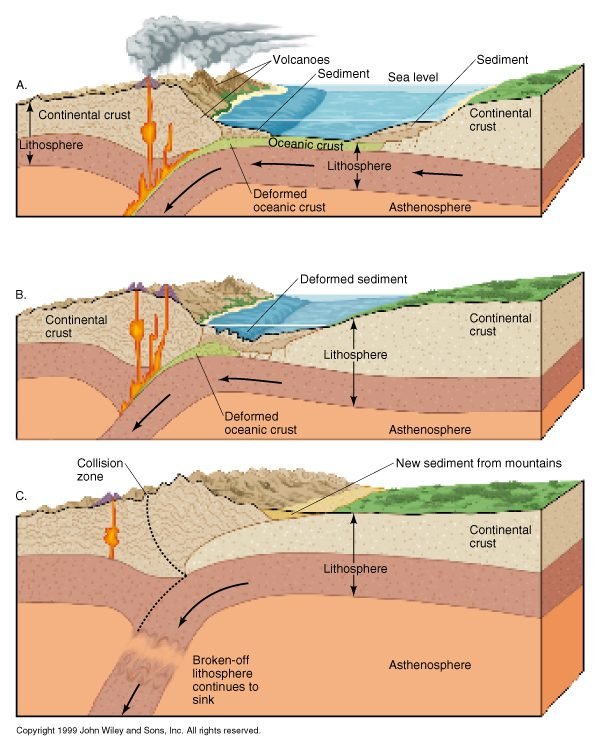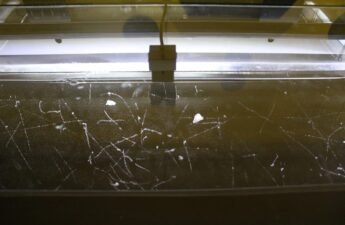In this post is explained what are and how the tectonic plates move. Also are shown the types of movement.
What are tectonic plates?
The most external part of Earth, after atmosphere, is lithosphere. It is composed by Earth’s crust and upper mantle. Lithosphere is rigid and divided in many pieces which are the tectonic plates. These pieces carry continents and surface of oceans, and stay above the mantle’s upper part called asthenosphere.

Lithosphere is made of rocks and minerals and has between 70 and 100 km depth. Can be divided in two layers which represent the most abundant elements: Sial (silicon and aluminum) and Sima (silicon and magnesium). Sial is less dense than Sima.

Mantle’s convection
Most part of mantle is made of iron and magnesium silicates. Lower mantle is hotter and liquefied because it stays closer to the nucleus. While the upper mantle is cooler and pasty. The hot mantle stays less dense and goes up in surface’s direction, while cooler mantle goes down for be more dense. As a result, are created many convection cells which move tectonic plates. Mantle’s temperatures are between 1000ºC and 3000ºC.

Movement of plates
Tectonic plates can stay away from each other, it is the divergent movement. It creates a ridge which is filled with magma. While a convergent movement is when two plates go in direction of each other. When two plates move in opposite direction, it is a transform movement.

In a convergent movement, thinner plate are curved and goes down, this movement is called subduction. In this case, thinner plate’s speed is bigger than the speed of mantle’s convection. It moves in the same way that a chain falling from table. Eventually, one part of underground lithosphere breaks up and sink in the mantle.

Continental drift
This map shows all tectonic plates that exist.

Monitoring movement of plates, it is possible to predict where continents will go. In 250 millions years, continents will joint together again and form Pangaea Ultima.





There are new images in the gallery.